#Unity Park Chicago
Explore tagged Tumblr posts
Text
Before I start publishing a series of deep-dive articles on the conduct of the Israel-HAMAS war, I want to call attention to an issue that I see has been festering since October 7th. It is the sudden increase of support for the “Free Palestine” movement in the United States and Europe. It is undeniable that in the weeks after the massacre, Free Palestine-people power has dramatically flourished around the world. But the crystallization of support in the West started with a now well-documented lie. On 17 October 2023, ten days after HAMAS rampaged across southern Israel, killing 1,400 civilians, a report circulated in the news that the Israelis had conducted an airstrike on the al-Ahli hospital in Gaza allegedly killing over 500 women and children. The reports also claimed that the hospital was destroyed in the strike. Every major newspaper in the world took this report at face value, though it was a HAMAS terrorist themselves that reported it. It took about a week for investigations to show that this was not true. The hospital was not destroyed in an airstrike. The parking lot was hit by a small rocket that malfunctioned and fell to the Earth. Fewer than 40 people were killed or injured. But this single event, and the lie that it was based on, set the entire American, Muslim diaspora, and their social justice allies to rally their movements against Israel, even though they were the victims of the 10-7 massacre. Affiliates of well-known groups, such as Black Lives Matter- Chicago, and Los Angeles chapters, published flyers and tweets with images of paragliders, flying the Palestinian flag. They did this fully aware that paragliders were used to fly into the Israeli “Love and Unity” dance party in the Negev desert. These airborne terrorists then mass murdered 260 revelers. A seeming wave of anti-Semitic insensitivity was building among the African-American, white, and Arab American social justice activists on the far left. When President Biden visited Israel on 18 October Arab Americans and their allies swore that they would never vote for the Biden administration. Many openly said they prefer a violent and anti-Muslim Trump administration because at least they would know what they were getting. They also screamed about how HAMAS was reporting 7,000 civilians were dead and 3,000 of them were children, without any way to verify it. To an outsider, it is as if the entire far left of American progressives had lost their minds. They went so far as to even protest and attack Senator Bernie Sanders, a well-known progressive hero, who happened to be Jewish.
59 notes
·
View notes
Text

On June 28, 1970, history was made with the first Gay Pride Parade, also known as the Christopher Street Liberation Day March. This groundbreaking event took place in New York City and marked a significant moment in the LGBTQ+ rights movement.
What was the turnout like?
With an estimated 3,000 to 5,000 participants, the march was a resounding success. The parade stretched an impressive 51 blocks from Greenwich Village to Central Park, showcasing the unity and strength of the LGBTQ+ community.
Did other cities participate?
Indeed, the spirit of pride spread across the nation that June. In addition to New York City, marches and parades were held in Chicago, Los Angeles, and San Francisco. These events served as powerful demonstrations of solidarity and resilience.
What was the significance of the first Gay Pride Parade?
The first Gay Pride Parade was a pivotal moment in LGBTQ+ history. It provided a platform for individuals to openly express their identities and demand equal rights. The visibility and unity displayed during the parade laid the foundation for future activism and progress in the fight for LGBTQ+ rights.
As we reflect on the historic significance of the first Gay Pride Parade, we honor the brave individuals who paved the way for the rights and freedoms that the LGBTQ+ community enjoys today. The spirit of pride and resilience that was on display that day continues to inspire and empower individuals around the world. 🌈
#lgbtq community#gay pride#lgbt pride#queer pride#queer community#gay community#trans community#trans pride#asexual#pansexual#lesbian pride#lesibans#pride flag#pride#pride month#happy pride 🌈#happy pride month
7 notes
·
View notes
Text
by Alexander Joffe
Christmas and festive celebrations and shopping were disrupted in parks, malls, stores and public venues ,such as midtown Manhattan and London, by protestors declaring “Christmas is canceled.” Assaults and arrests were reported. Protests were also held on Christmas morning outside the homes of Defense Secretary Lloyd Austin and national Security Advisor Jake Sullivan. Efforts to shut down New Year’s celebrations were made in major cities.
The situation in Gaza was the ostensible motive but the actions were undertaken by pro-Palestinian groups as well as a wide array of communist and social groups including The People’s Forum and the Party for Socialism and Liberation. The support for “Palestine” given by climate change personality Greta Thunberg demonstrated the unity of these and other far left causes.
Another direct reflection of “Globalize the Intifada” protests were hundreds of bomb threats and swatting threats called in to Jewish institutions, apparently from outside the US. Violent protests were held outside of Jewish owned business in cities including Philadelphia, Chicago, Los Angeles, and New York City. Property crimes directed against Jewish owned businesses and other sites in New York City also rose 85% in December. S
Shabbat services at Temple Beth Am in Los Angeles were relocated for the first time in history after a pro-Hamas demonstration was scheduled in a park across the street.
The House of Representatives also passed a resolution condemning the October 7 attack and stating that anti-Zionism is a form of antisemitism. The measure passed 311-14 but 92 Democrats voted “present.” The pro-BDS “Squad” comprised the no votes along with Rep. Thomas Massie (R-KY).
The increasingly wide distribution of Muslim communities in the US and their growing political action around the single issue of opposing Israel is a growing factor in future electoral calculations, particularly in states such as Michigan, Virginia, and New Jersey.
At the same time pro-Hamas activists have continued to target Democrats. In one incident a Michigan Democratic Party holiday event was disrupted when members of the Palestinian Youth Movement and Party for Socialism and Liberation entered the venue to harass Congresswoman Shri Thanedar (D-MI). The resulting fight sent several individuals to the hospital. Congressman Ritchie Torres (D-NY) was harassed by pro-Hamas protestors at the 92nd Street Y who shouted “Ritchie Torres, you can’t hide, we charge you with genocide.” Pro-Hamas protestors also vandalized the offices of several Democratic Congressmen. as well as the home of Rep. Adam Smith (D-WA). The willingness to attack politicians is a grave escalation in the war against Israel in the US.
16 notes
·
View notes
Text
George W. Maher, architect - part 1
Hutchinson Street District, Chicago
Unless otherwise noted, photographs are by Roger Jones

George Maher in the 1890s (Kenilworth Historical Society)
George Washington Maher (December 25, 1864 – September 12, 1926) was an architect who worked in the United States mainly during the first quarter of the 20th century. Maher was noted for his designs in the Prairie Style, and in his time was often more well-known than his contemporary Frank Lloyd Wright.
Maher was part of a new movement in architecture that sought to establish a distinctive American style. East Coast architect Henry H. Richardson had garnered attention by designing monolithic stone buildings. In Chicago, a new architectural style was emerging. Variously labeled as “The New School of the Midwest,” “Rationalism” or “Chicago Style,” it is today known as the Prairie School.Many young architects had begun their careers together and were inspired by Richardson and Sullivan. Maher, George Elmslie and Frank Lloyd Wright had worked together in the office of architect Joseph Lyman Silsbee, whose influence can also be seen in their work. Evanston Roundtable
Maher is well-represented in Chicago, notably in the Hutchinson Street District, and found early success in Oak Park, as well as in Kenilworth, where he lived.
This post focuses on five houses he designed on Hutchinson Street, and includes links to interior photos and historic images.
Mosser House, 750 W. Hutchinson St., 1902

The facade of the Mosser House isn't easily seen from the street. Photo: Zillow



Exterior views
This house was designed by George W. Maher in 1902, and sits on 6 city lots of private landscaping, designed by landscape architect Jens Jensen. The home's interior features details crafted by designer Louis Millet, who also designed the stained glass Tiffany dome in the Chicago Cultural Center. The home is located in the former Scales parcel (see Scales house below).




Above floor plans and fireplace views courtesy of Pricey Pads. Click on link for extensive views of the house.
Willliam H. Lake House, 832 W. Hutchinson St., 1904

Front view



Above: images from the Inland Architect and News Record, Vol. XLVI No. 3, Oct. 1905
W.H. Lake was a grain broker and senior partner in the firm of W.H. Lake & Company which was located in the Board of Trade Building. Lake, following the lead of his neighbor, John Scales, chose to commission George Maher as architect for his home, which was constructed in 1904. In the Lake House, Maher developed his final version of the Farson House (1897) type. In this type of design Maher made his most significant contribution to the indigenous American architecture he worked so hard to develop. Unity is achieved by formal arrangement of elements within the design. The basic form of this house type is a massive rec- tangle with horizontal elements dominating the composition and drawing it together. Hutchinson Street District, City of Chicago Landmark Designation Reports
Images of the interior an be found on the real estate site here.
Seymour House, 817 W. Hutchinson St., 1913



The house at 817 Hutchinson was designed by George W. Maher and constructed in 1913 for Claude Seymour. Drawings of the front facade were published in the Chicago Architectural Club Catalog for 1913. Seymour was a vice-president of Otto Young and Company, an upholstery business. Like many of his neighbors, Young was active in the Chicago Automobile Club and a member of many other fashionable clubs.
In his design for the Seymour House, Maher borrowed heavily from English country houses by C.F.A. Voysey and the firm of Parker and Unwin. The two-story house is basically H-shaped, though a one-story porch (not an addition) does break the symmetry of the facade. The many windows and their arrangement here are typical of Parker & Unwin's designs, but the geometric pattern in the leaded glass is distinctly the work of Maher.
This design and its variations are used consistently in all decorative elements to lend a measure of continuity; Maher called it his motif-rhythm theory.
City of Chicago Landmark designation Reports

Image from The Western Architect, March 1914
Images of the interior an be found on the real estate site here.
John C. Scales House, 840 West Hutchinson Street, 1894


John C. Scales came to Chicago with his parents in 1845 when he was just 4 years old, and his father set up a commission business in town, where John eventually became a partner. Scales, the son, invested his money in real estate and purchased a section of the Buena Park subdivision on the city's then remote north side. Chicago designslinger
The Queen Anne style and busy roofline contrast strongly with Maher's later designs along Hutchinson St. The rough-cut stone along with half-timber design is almost playful.

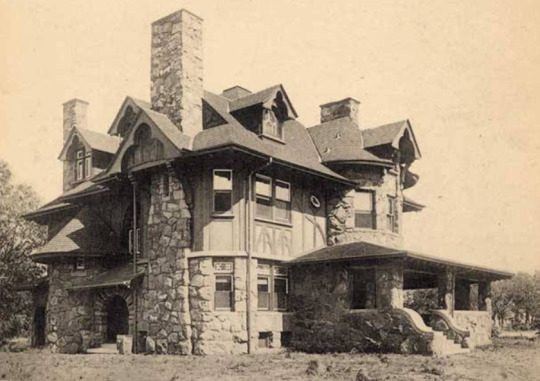
Archival photo of the Scales House
Brackebush House, 839 W. Hutchinson St., c. 1909-10

Maher designed this home in 1909 for Mrs. Grace Brackebush.
Despite the rather awkward handling of certain elements in the design of the house at 839 Hutchinson Street certain experts feel that the design is the work of George W. Maher. The design probably dates from the period between 1905 and 1910, when Maher was beginning to work with a new type of design, one that was inspired by English architects such as C.F.A. Voysey and the Viennese architect Joseph M. Olbrich. - Hutchinson Street District, City of Chicago Landmark Designation Report

Images of the interior can be found on the real estate site here
Sources:
City of Chicago Landmark Designation Reports, Hutchinson Street District, Revised Summary of Information September 8, 1975, Commission on Chicago Historical and Architectural Landmarks
Geo. W. Maher, a democrat in Architecture. The Western Architect, March 1914
George W. Maher's Prairie Style. Owlcation.
Four Architectural Gems in Chicago's Buena Park for Sale. Chicago Magazine.
Buena Park Neighbors, History of Hutchinson Street.
The George W. Maher Society, About George W. Maher.
Block Club Chicago, Want to Own a Piece of Chicago's Past?
Evanston Roundtable - George W. Maher
#George W. Maher#architecture#chicago#buildings#photography#Maher#Hutchinson St.#residences#prairie style
5 notes
·
View notes
Text
Tuesday, August 20, 2024
‘Looking for a change they’re not getting’ (Washington Post) The historic inflation that hit the United States and every other advanced nation over the past three years helps explain voters’ ire. But conditions in Erie—a bellwether county that voted in turn for Barack Obama, Donald Trump and Joe Biden—show how long-term developments also are to blame. The county has fewer jobs and residents today than it did in 2001. Though the 3.9 percent unemployment rate in June was lower than the national 4.1 percent mark, that’s in part because many people have dropped out of the labor force because of age or disability. The poverty rate is higher than the national average; a larger share of people rely on government assistance, including food stamps; and job opportunities for the young are scarce. Almost 1 in 5 Americans live in a “left behind” county like this one, according to the Economic Innovation Group, a nonpartisan research outfit. These roughly 1,000 U.S. counties grew their population and household income less than half as fast as the nation did between 2000 and 2016. “It seems like right now the whole country is looking for a change they’re not getting,” said Joe Sinnott, a Democrat who served three terms as Erie’s mayor and now heads the county’s economic development efforts. “They’re looking for a stability they don’t have and they’re trying these different ways to get it, to get back to the stability of the Clinton years or maybe even going back to the Reagan years.”
The Hotelification of Offices (NYT) Visitors to the Springline complex in Menlo Park, Calif., are surrounded by a sense of comfort and luxury often found at high-end hotels: off-white walls with a Roman clay finish, a gray-and-white marble coffee table and a white leather bench beneath an 8-by-4 resin canvas etched with the words “Hello, tomorrow.” Springline’s signature scent—hints of salty sea air, white water lily, dry musk and honeydew melon—linger in the air. But Springline isn’t a hotel. It’s a “work resort,” meaning that its office space designs have taken a page from boutique hotels. The complex is a 6.4-acre town square steps from the Menlo Park Caltrain station in San Francisco’s Bay Area. It includes two premium office buildings, nine restaurants, outdoor work spaces and terraces where people can mingle and connect, gym facilities, a high-end golf simulator, an upscale Italian grocery store and a 183-unit residential building. And like any good resort, it has a calendar of community events from craft cocktail fairs to silent discos. With an office vacancy rate at about 20 percent in the United States, downtown business districts are trying whatever they can to get workers back—including resort-like work spaces that match or surpass the comfort of their homes.
Protesters Are Converging on Chicago. City Leaders Say They’re Prepared. (NYT) As delegates arrived in Chicago on Sunday night ahead of the Democratic National Convention, protesters gathered along Michigan Avenue. On Monday, as the political show begins inside the United Center, demonstrators say they will gather by the thousands outside. And as the convention goes on, activists say, so too will the protests, every single day, showcasing divisions on the left during a week when Vice President Kamala Harris is trying to project Democratic unity and enthusiasm. From the moment the Democrats chose Chicago as the site for their nominating convention, it was a foregone conclusion that protesters would show up in large numbers to protest the Biden-Harris administration’s approach to a war that Gaza health authorities say has killed more than 40,000 Palestinians. The city has a long tradition of left-wing activism, and nominating conventions tend to attract demonstrations.
The Mennonites Making the Amazon Their Home (NYT) Groups of Mennonites, seeking inexpensive land far from modern life, are carving out new colonies in the Amazon. After weeks of living in jungle tents, the handful of Mennonite families trying to make a new home deep in the Peruvian Amazon began to despair. Wasps attacked as they tried to clear forest. Heavy rains turned the road to their camp to mud. Running low on supplies, some wanted to turn back. Instead, they worked harder and eventually carved out an enclave. “There’s a place here where I wanted to live so we came and opened part of it up,” recalled Wilhelm Thiessen, a Mennonite farmer. “That’s what everyone did to have a place to live.” Today, seven years later, the cluster of homesteads is now a thriving colony, Wanderland, home to roughly 150 families, a church—which doubles as a school—and a cheese-processing facility. It is one of a string of Mennonite settlements that have taken root throughout the Amazon, turning forest into thriving farms.
Ukrainian president says the push into Russia’s Kursk region is to create a buffer zone there (AP) Ukrainian President Volodymyr Zelenskyy said Sunday the daring military incursion into Russia’s Kursk region aims to create a buffer zone to prevent further attacks by Moscow across the border. It was the first time Zelenskyy clearly stated the aim of the operation that began Aug. 6. Previously, he had said the operation aimed to protect communities in the bordering Sumy region from constant shelling. This weekend, Ukraine destroyed a key bridge in the region and struck a second one nearby, disrupting supply lines as it pressed the incursion, officials said.
Lawmakers in Turkey draw blood in brawl during debate on jailed colleague (AP) A brawl broke out among Turkish lawmakers Friday during a heated debate over an opposition delegate currently jailed on what are widely considered to be politically motivated charges. Televised footage showed Ahmet Sik, a representative from the same party as the imprisoned deputy, being approached and attacked by a lawmaker from President Recep Tayyip Erdogan’s ruling party while speaking at the chamber��s podium. Sik had just called members of the ruling party a “terrorist organization.” In a subsequent scuffle involving dozens of deputies, a female lawmaker was struck, leaving drops of blood on steps leading the speaker’s lectern. Another opposition member was also reportedly injured. Physical tussles are not uncommon among Turkey’s lawmakers.
Thailand’s king endorses Paetongtarn Shinawatra as new prime minister (CNN) Thailand’s king endorses new prime minister. King Maha Vajiralongkorn endorsed Paetongtarn Shinawatra as Thailand’s new prime minister on Sunday, two days after her election by the country’s parliament. The daughter of former Prime Minister Thaksin Shinawatra, Paetongtarn becomes the youngest Thai prime minister and the third of her family to occupy this position. Her government faces several challenges, including reforms of the economic and universal healthcare systems.
Chinese and Philippine ships collide at Sabina Shoal, a new flash point (Washington Post) Chinese and Philippine coast guard vessels collided early Monday near the Sabina Shoal, according to officials from both countries and security analysts tracking ship movements, opening a new flash point between the countries in their territorial dispute in the South China Sea. While skirmishes between Chinese and Philippine ships have been increasing across the South China Sea, Monday’s incident marks the first time the countries have clashed directly over the Sabina Shoal. China claims the vast majority of the South China Sea as its territory, although it has no legal backing to do so. Its claim includes all of the Spratly Islands archipelago. The Sabina Shoal, 86 miles from the Philippine island of Palawan, is one of the closest maritime features in the Spratlys to the Philippines. It is within the 200 miles that the Philippines considers its Exclusive Economic Zone (EEZ).
Blinken pushes for cease-fire in his 9th trip to Mideast since war began (AP) U.S. Secretary of State Antony Blinken says now is “maybe the last” opportunity to reach a Gaza cease-fire agreement that would return hostages held by Hamas and bring relief to Palestinian suffering after 10 months of war in Gaza. Blinken on Monday was on his ninth urgent mission to the Middle East since the conflict began. His visit came days after mediators, including the United States, expressed renewed optimism a deal was near. But Hamas has voiced deep dissatisfaction with the latest proposal and Israel has said there were areas it was unwilling to compromise. The trip also comes amid fears the conflict could widen into a deeper regional war following the killings of top militant commanders in Lebanon that Iran blamed on Israel.
Kuwait, in grip of desert summer heat, announces power cuts after fuel disruption (AP) Tiny, oil-rich Kuwait on Sunday instituted rolling blackouts in several residential neighborhoods despite high summertime temperatures in the desert emirate. The state-run KUNA news agency blamed “a fuel supply disruption” for the blackouts, which shut down desalination plants and some power stations. The forecast high for Kuwait on Sunday was 43 degrees Celsius (109 Fahrenheit). Weather forecasters warned it could feel like 53 degrees Celsius (127 degrees Fahrenheit).
Former Saudi official alleges Prince Mohammed forged king’s signature on Yemen war decree, BBC says (AP) A former Saudi official alleged in a report that Saudi Arabia’s Crown Prince Mohammed bin Salman forged the signature of his father on the royal decree that launched the kingdom’s yearslong, stalemated war against Yemen’s Houthi rebels. Saudi Arabia did not immediately respond to a request for comment over the allegations made without supporting evidence by Saad al-Jabri in an interview published Monday by the BBC, though the kingdom has described him as “a discredited former government official.” Al-Jabri, a former Saudi intelligence official who lives in exile in Canada, has been in a yearslong dispute with the kingdom as his two children have been imprisoned in a case he describes as trying to lure him back to Saudi Arabia. The allegation comes as Prince Mohammed now serves as the de facto leader of Saudi Arabia, often meeting leaders in place of his father, the 88-year-old King Salman. His assertive behavior, particularly at the start of his ascension to power around the beginning of the Yemen war in 2015, extended to a wider crackdown on any perceived dissent or power base that could challenge his rule.
Libya’s central bank ‘suspends operations’ after official abducted (Guardian) On Sunday, the Central Bank of Libya announced that it would be “suspending all operations” following the kidnapping of Musab Msallem, the bank’s head of information technology. It’s currently unclear who exactly is behind the kidnapping, but the bank said that Msallem and other executives had been “threatened with abduction” by “unlawful parties,” adding that it would “not resume operations” until he’s released. Last week, a group of armed men besieged the central bank’s headquarters in the Libyan capital of Tripoli, which local media said was an attempt to force the bank’s governor to resign. Currently, the African nation is still split by a power struggle between the NATO-backed official government centered around Tripoli in the west and a rival administration operating out of the east.
Trekking With Grandpa, Scuba Diving With Grandma (NYT) Rick Rhoads, 80, was “training like crazy” last spring, walking six miles a day—“all hills”—to get ready for his summer vacation. Mr. Rhoads, of Orcas Island, Wash., and Lucy Erent, his 15-year-old granddaughter, who lives in Prague, were planning to trek 85 miles in eight days along Scotland’s West Highland Way. Mr. Rhoads wasn’t daunted by the distance, or by the age difference. He said he was looking forward to continuing discussions the pair has had on video calls, on topics as varied as stage drama, cosplay, pandemics and family dynamics. “I’ll get her to do the talking when we’re going up hills,” he joked. When they finally did the trek, in early July, Mr. Rhoads said the adventure was challenging, but he was eager to do another, perhaps a route “that passed by cafes.” Sixty may or may not be the new 40, but it’s clear that many older adults are enjoying longer “healthspans”—the time they are active, fit and healthy. This shift is adding a new dimension to traditional grandparent-grandchild vacations: adventure. Think bike trips instead of cruise ships, wilderness treks instead of bus tours.
2 notes
·
View notes
Photo


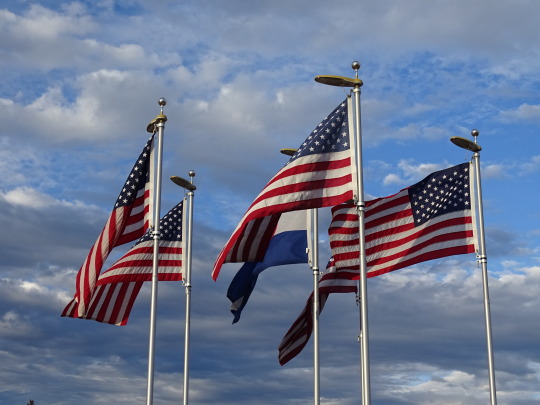
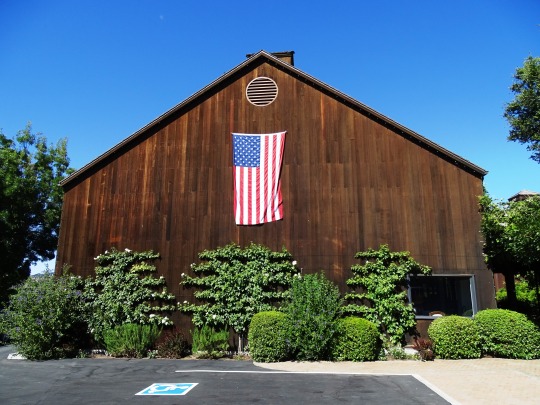
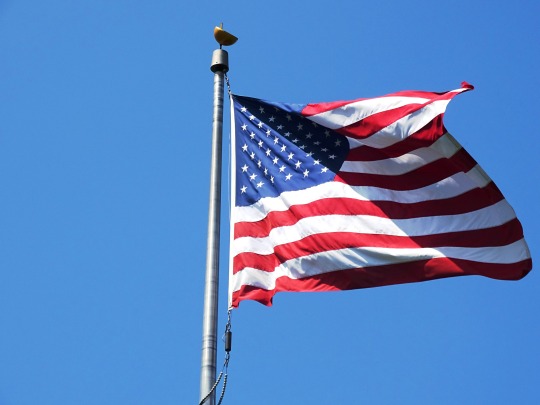
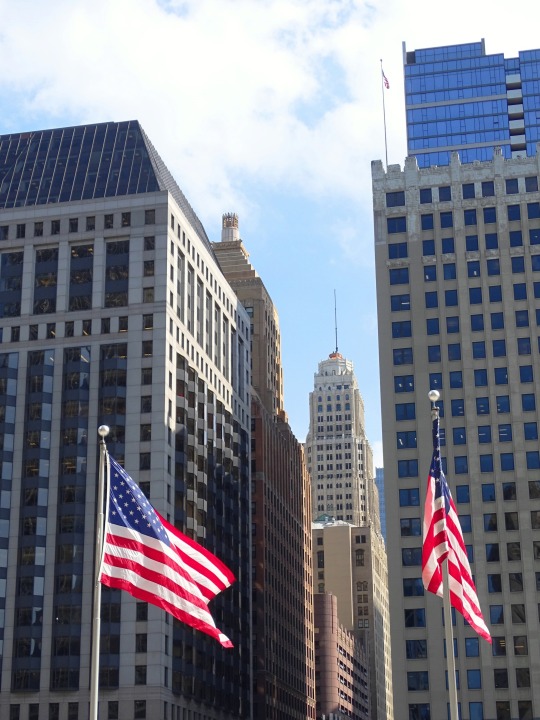
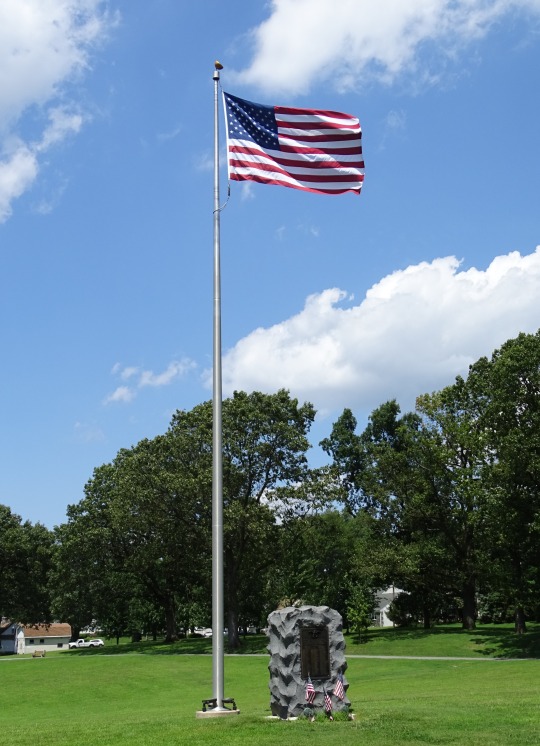

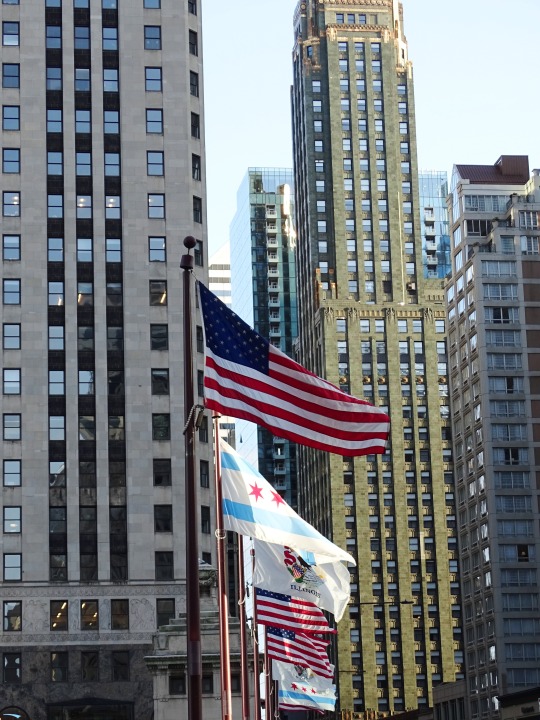
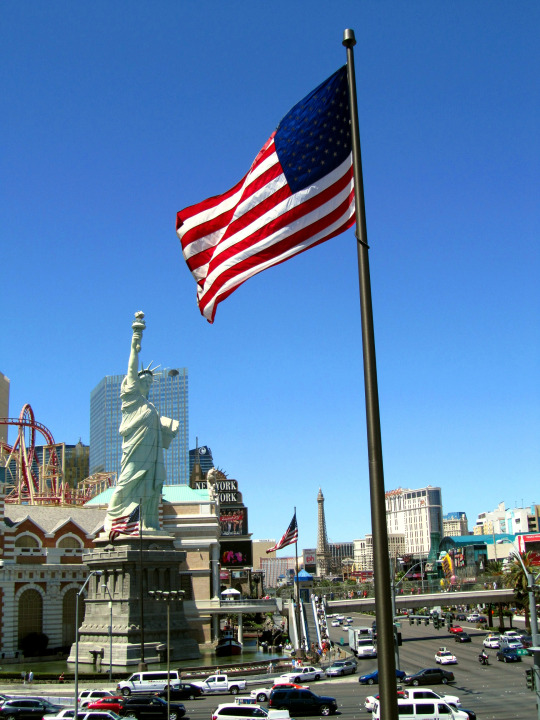
The United States adopted The Star-Spangled Banner as its national anthem on March 3, 1931.
National Anthem Day
In the early years of the republic, there were a few popular patriotic songs, such as "Yankee Doodle" and "Hail Columbia," but there was no national anthem. Today we celebrate the "The Star-Spangled Banner," which became the official national anthem of the United States on March 3, 1931. The song was inspired by a real flag and events that took place surrounding it.
The War of 1812 began in June of 1812. The United States achieved some early victories, but after France and Napoleon were defeated at Waterloo in April of 1814, the British were able to focus more on the war in the United States. After invading Washington D.C. and setting fire to The White House and Capitol in August, the British turned their attention to Baltimore, Maryland.
On September 13, Baltimore's Fort McHenry withstood a 25-hour bombardment from the British Royal Navy. Early on the morning of September 14, soldiers hoisted a large (30 x 42 feet) American flag over the fort. At the time, Francis Scott Key, an attorney who worked in Washington D.C., was on a ship in the harbor of Baltimore. He had been working to negotiate the release of Dr. William Beanes, who had been captured in an earlier battle. Although he was able to secure Beanes' release, the Americans were told they could not leave until the bombardment was over. As Key saw the flag wave over the fort, he wrote the first verse of what would become "The Star-Spangled Banner." At the time he named it "Defense of Fort M'Henry."
Sometime shortly thereafter, Key wrote three more verses. (Today just the first verse is commonly sung, with the fourth verse sometimes being used at formal occasions.) The verses were issued on a broadside by a local printer on September 17, and they were printed in two Baltimore newspapers, the Baltimore Patriot and The American, on September 20. The words were then printed by more papers along the East Coast.
Key set the verses to the tune of an English drinking song called "To Anacreon in Heaven" (also known as "The Anacreontic Song"), which was written in 1775 by John Stafford Smith and originally performed by the Anacreontic Society, a gentlemen's club in England. The song eventually became popular in the United States. Its subject, Anacreon, was an ancient Greek poet known for loving wine. Key had previously used the tune to accompany verses he had written in 1805 about American naval victories in the Barbary War. In fact, some of the wording he had used in the verses for that war were similar in nature to those in "Defense of Fort M'Henry." By one account, it was Key's brother-in-law who noticed the new verses fit the same melody, and convinced him to use it again. In October, Baltimore actor Ferdinand Durang gave the first public performance of the song, and the following month the song appeared in print under the title "The Star-Spangled Banner" for the first time.
The song gained in prominence following the Civil War, because it was about the flag and the flag was increasing as a symbol of national unity at the time. It became a staple of Fourth of July celebrations and other patriotic events. In the 1890s, the U.S. military began using it for ceremonies. In particular, it became the song of the Navy's flag raisings.
Woodrow Wilson signed an order in 1916 to make "The Star-Spangled Banner" the national anthem, but it did not become the official anthem until Congress passed a law fifteen years later. Wilson also asked the Bureau of Education to standardize the song, as there were a few different versions at the time. Five musicians worked on the song, including John Philip Sousa. The new version was first performed on December 5, 1917.
"The Star-Spangled Banner" made its major-sporting-event debut on September 5, 1918, at Chicago's Comiskey Park, during the first game of the World Series between the Chicago Cubs and the Boston Red Sox. The United States was in World War I at the time, and there was some added emotion in the air because a bombing had taken place the day before at the Chicago Federal Building. A military band played the song during the seventh-inning stretch, and players and fans saluted. The song soon began being sung at other baseball stadiums, and then spread to other sports.
On April 15, 1929, Rep. John Linthicum (D-Md.) introduced a bill to make "The Star-Spangled Banner" the national anthem. He had previously introduced such a bill four times before, going all the way back to 1918. As part of his district was in Baltimore, some thought that he was pushing for the bill for himself and for his district more than he was doing it for patriotism and the country. The bill eventually got a hearing before the House Judiciary Committee, and Linthicum presented them with a petition with 5 million signatures, which had been organized by the Veterans of Foreign Wars. He also presented them with resolutions and letters from 150 organizations and messages of support from 25 governors. The House approved the bill on April 21, 1930, and the Senate did on March 3, 1931. President Herbert Hoover signed it the same day and the "Star-Spangled Banner" became the official national anthem of the United States.
Although it has largely been looked upon as a patriotic song about freedom, it has not been without controversy. Key owned slaves for many years, including at the time when he wrote the song, which includes the line "the land of the free." He eventually freed his slaves, and his position was that slaves should return back to Africa. In recent times, some have used the song to protest racial injustice, by staying seated or kneeling when the anthem is played at sporting events. They have seen this as a patriotic gesture, while others have seen it as quite the opposite.
And what became of the actual star-spangled banner that the song was written about? The flag had been sewn by Mary Pickersgill with the help of a few others. After the battle, it was given to George Armistead, the commander of Fort McHenry. He died a handful of years later and his widow, Louisa, received it. It stayed in the family for many years and was rarely seen. In 1878, the Armistead's grandson, Eben Appleton, inherited the flag. He allowed it to be displayed at Baltimore's sesquicentennial in 1880, but then put it in a safety deposit box because he wanted to preserve its condition. He loaned it to the Smithsonian Institution in 1907, and donated it permanently to them in 1912, with the request that it be on display for the public. In the late 1990s, a preservation project was undertaken. The flag can be visited today at the Smithsonian's National Museum of American History.
How to Observe National Anthem Day
There are many ways to celebrate the day:
Read, memorize, and sing "The Star-Spangled Banner."
Visit the original Star-Spangled Banner at the National Museum of American History.
Visit the home where the flag was sewn.
Explore Fort McHenry, where the flag once flew.
Read a book about the "Star-Spangled Banner," such as Marc Ferris' Star-Spangled Banner: The Unlikely Story of America's National Anthem or Marc Leepson's What So Proudly We Hailed: Francis Scott Key, A Life.
Watch a documentary about "The Star-Spangled Banner," or watch a video about the Star-Spangled Banner exhibit.
Watch or listen to noteworthy renditions of the "Star-Spangled Banner."
If you are not from the United States, find out if your country has a national anthem, and learn about it and its history.
Source
#Alamosa#Colorado#Sonoma#St. Helena#Bunny Foo Foo by Lawrence Argent#Turnbull Wine Cellars#Oakville#vacation#summer 2022#2019#original photography#Malvern#Paoli Battlefield Site and Parade Grounds#National Anthem Day#Star-Spangled Banner#3 March 1931#anniversary#US history#DeWitt#US flag#Chicago#architecture#landscape#cityscape#Las Vegas#Paradise#USA#2011
27 notes
·
View notes
Text
Updated List:



Reminder to click the link to see the most up-to-date information
[ID:
February 14, 2024
PHOENIX, AZ | 4PM NE Corner of 7th St & McDowell Rd
PORTLAND, OR | 4:30 PM Pioneer Courthouse Square
SANTA ROSA, CA | 7 PM Courthouse Square, Unity Statue, 4th St.,
OAKLAND, CA | 6PM. ‘The Great Room’ in La Escuelita- 1050 2nd Ave.
ONEONTA, NY | 4PM Muller Plaza
WASHINGTON, DC | 2PM Dupont Circle
February 15, 2024
AUSTIN, TX | 10AM Austin City Hall, 301 2nd St
BURLINGTON, VT | 4PM UVM Davis Center, 590 Main Street- Intersection of University Heights and Main St
RICHMOND, CA | 5:30PM ‘Climate Justice Arts Project Space’ at Bridge Art/Storage Facility- 23 Maine Ave.
PHILLY TO D.C. | Solidarity walk from Philly to D.C. check website for exact locations
WASHINGTON, D.C. | 11 a.m. 1600 Pennsylvania Ave. (Lafayette Square Park/White House)
February 16, 2024
BUFFALO, NY | 3PM Lafayette Square
EAU CLAIRE, WI | 5:00PM Corner of Hwy 93 and Golf Rd (Outside Hardee’s)
FRANKFORT, KY | 3PM 700 Capital Ave.
LANSING, MI | 2 PM State Capitol Building front lawn
SAN PEDRO, CA | 5PM 13th and Gaffey St.
February 17, 2024
FAIRVIEW HEIGHTS, IL | 12:30PM 625 Lincoln HwY
INDIANAPOLIS, IN | 8:00 PM 200 E. Washington Street
OAKLAND, CA | 10AM-2PM 5543 Telegraph Ave.
SAN DIEGO, CA | 12pm. Sunset Cliffs Blvd and W Point Loma Blvd
SEATTLE, WA | 12 PM Westlake Park
SPOKANE, WA | 12pm, Corners of Wellesley and Division
STOCKTON, CA | 12PM Stockton City Hall. 425 N. El Dorado St.
WICITA, KS | 1PM 21st & Rock Rd.
VIROQUA, WI | 11 AM Corner of Main and Decker Streets
February 18, 2024
BOONE, NC | 3PM Corner of 321 and 105 (near Wells Fargo)
MILWAUKEE, WI | 2PM Location to be announced check link
MISSOULA, MT | 11 AM Missoula Co.Courthouse W. Broadway
NEW ORLEANS, LA | 11:30 AM ARMSTRONG PARK
REDONDO BEACH, CA | 11AM 1815 Hawthorne Blvd
SANTA ROSA, CA | 2PPM Courthouse Square, 3rd St., Santa Rosa
February 19, 2024
ARANSAS PASS, TX | 3PM 123 S Lamont St
CHICAGO, IL | 11AM Chicago History Museum, Children’s Fountain
February 25, 2024
SAINT PAUL, MN | 1 PM 1176 N Mississippi River Blvd, St. Paul, MN.
End ID.]
People in the US: find a protest for Rafah
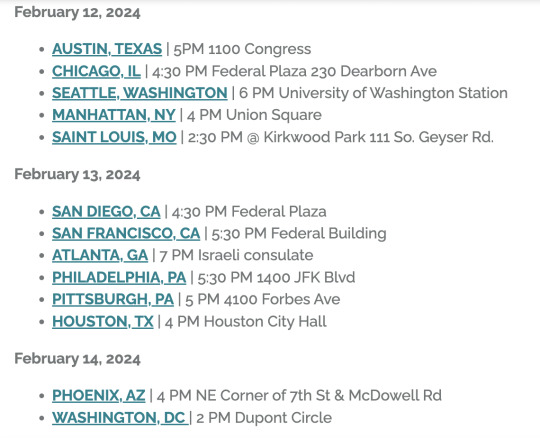

I found out about my local protest too late to attend (I don't have a car and I live in an area with zero public transportation) so I thought I'd share this list of protests so that other people might be able to go to their's!
[ID:
February 12, 2024
AUSTIN, TEXAS | 5PM 1100 Congress
CHICAGO, IL | 4:30 PM Federal Plaza 230 Dearborn Ave
SEATTLE, WASHINGTON | 6 PM University of Washington Station
MANHATTAN, NY | 4 PM Union Square
SAINT LOUIS, MO | 2:30 PM @ Kirkwood Park 111 So. Geyser Rd.
February 13, 2024
SAN DIEGO, CA | 4:30 PM Federal Plaza
SAN FRANCISCO, CA | 5:30 PM Federal Building
ATLANTA, GA | 7 PM Israeli consulate
PHILADELPHIA, PA | 5:30 PM 1400 JFK Blvd
PITTSBURGH, PA | 5 PM 4100 Forbes Ave
HOUSTON, TX | 4 PM Houston City Hall
February 14, 2024
PHOENIX, AZ | 4 PM NE Corner of 7th St & McDowell Rd
WASHINGTON, DC | 2 PM Dupont Circle
February 15, 2024
AUSTIN, TX | 10 AM Austin City Hall, 301 2nd St
February 16, 2024
EAU CLAIRE, WI | 5 PM Corner of Hwy 93 and Golf Rd (Outside Hardee’s)
February 18, 2024
NEW ORLEANS, LA | 11:30 AM ARMSTRONG PARK
February 19, 2024
CHICAGO, IL | 11 AM Chicago History Museum, Children’s Fountain
February 25, 2024
SAINT PAUL, MN | 1 PM 1176 N Mississippi River Blvd, St. Paul, MN.
End ID.]
#palestine#free palestine#free gaza#rafah#ceasefire now#stop the genocide#palestinian genocide#described
1K notes
·
View notes
Text

Minister Charles Smith (November 11, 1940) a visual artist, historian, activist, and minister, was born to Bertha Mary Smith and an unnamed father in New Orleans. He and his family moved to Chicago, where, at the age of fourteen, he attended the funeral of Emmet Till.
He was drafted into the military and served two years as an infantryman in the Marines in South Vietnam, he was honorably discharged with a Purple Heart due to an injury.
He transformed his home into an art environment where he built sculptures and monuments to memorialize moments in Black history and anti-Black racism. He used his experiences in the Marine Corps during the Vietnam War and events in African American history, from slavery to the present, as his subject matter. He named his museum the African American Heritage Museum and Black Veteran’s Archive. The museum had 600 sculptures and 150 fixed pieces. The Art Institute of Chicago named his museum a Millennium Site. The Kohler Foundation purchased 448 of his works.
After finding a gravestone of Peter Hammond, who was found to be the “Unnamed Slave Boy.” He established a second art museum in Hammond, Louisiana. The Hammond Museum included references to Egyptian architecture and ancient tombs. His work is part of the collection of the John Micheal Kohler Art Center. His work was included in Life, Liberty, and Pursuit of Happiness at the American Visionary Art Museum. His work is in the Smithsonian American Art Museum.
He lectured at the African American Men of Unity and The Road Less Traveled conference. His work was auctioned at the New Orleans Botanical Garden benefit. His work was included in the Kohler Art Center’s 50th Anniversary exhibition series and Chicago Calling: Art Against the Flow.
He had his first solo exhibition at White Columns. The exhibition featured twenty-nine new figurative sculptural works created for the gallery. He has art sculptures that portray famous figures, including Phyllis Wheatley, Gordon Parks, Diana Ross, Iceberg Slim, and Paul Robeson. He is an ordained minister at God’s House of Prayer and Holiness. #africanhistory365 #africanexcellence
1 note
·
View note
Text
Embracing Diversity: Religion and Places of Worship in Oak Brook, Illinois.
Oak Brook, Illinois, a suburb of Chicago, is renowned for its affluent neighborhoods, lush greenery, and thriving business community. Amidst its bustling streets and tranquil parks lies a rich tapestry of religious diversity, where places of worship stand as symbols of unity and community for residents and visitors alike.
At the heart of Oak Brook's religious landscape is its commitment to embracing diversity. From historic churches to modern mosques, the town welcomes people of all faiths with open arms. This inclusivity fosters a sense of belonging and mutual respect among its residents, creating a harmonious coexistence that enriches the fabric of Oak Brook society.
Christianity has deep roots in Oak Brook, with numerous churches representing various denominations scattered throughout the town. From the traditional architecture of St. John's Episcopal Church to the vibrant congregation of Christ Church of Oak Brook, worshippers find solace and spiritual nourishment in these sacred spaces. These churches not only serve as places of worship but also as hubs for community outreach and social activities, strengthening bonds among believers and non-believers alike.
In addition to Christianity, Oak Brook is home to a thriving Jewish community, with synagogues playing a vital role in religious life. Temple Har Zion stands as a beacon of Jewish heritage and tradition, offering services, educational programs, and cultural events that celebrate the richness of Jewish identity. The synagogue serves as a gathering place for Jews of all backgrounds, fostering a sense of unity and solidarity within the community.
As the demographics of Oak Brook continue to evolve, so too does its religious landscape. Islamic Center of Western Suburbs exemplifies the town's embrace of diversity, providing a place of worship and fellowship for Muslims in the area. The mosque serves as a hub for spiritual growth and interfaith dialogue, promoting understanding and cooperation among people of different faiths.
Beyond Christianity, Judaism, and Islam, Oak Brook boasts a mosaic of religious expressions, including Hinduism, Buddhism, and Sikhism. The Hindu Temple of Greater Chicago, with its ornate architecture and vibrant ceremonies, stands as a testament to the town's multicultural identity. Similarly, the Sikh Religious Society of Chicago embodies the values of service and equality, welcoming all who seek spiritual enlightenment and community engagement.
In Oak Brook, places of worship transcend religious boundaries to become symbols of unity and compassion. They serve as sanctuaries for the soul, offering refuge from the chaos of daily life and a sense of belonging to all who enter their doors. Whether attending a Sunday service, observing Shabbat, or participating in Ramadan prayers, residents of Oak Brook find common ground in their shared pursuit of spiritual fulfillment and human connection.
Moreover, these places of worship are not isolated entities but integral parts of the Oak Brook community. They collaborate with local organizations, schools, and businesses to address social issues, promote education, and support charitable causes. Through interfaith initiatives and community service projects, religious institutions in Oak Brook demonstrate their commitment to making a positive impact on the world around them.
In times of joy and sorrow, Oak Brook's places of worship stand as pillars of strength and support for individuals and families. Baptisms, weddings, and funerals are solemnized with reverence and compassion, uniting people across religious divides in moments of shared humanity. The bonds forged within these sacred spaces transcend religious affiliation, fostering a sense of solidarity that transcends differences and celebrates the diversity of Oak Brook's population.
In conclusion, Oak Brook, Illinois, is a shining example of how diversity enriches the fabric of a community, particularly in matters of religion and spirituality. Through its myriad places of worship, the town embraces people of all faiths, fostering unity, understanding, and mutual respect. As Oak Brook continues to grow and evolve, its commitment to religious diversity will remain a cornerstone of its identity, ensuring that all who call this town home find solace, acceptance, and belonging within its borders.
0 notes
Text
Isabella Rossellini
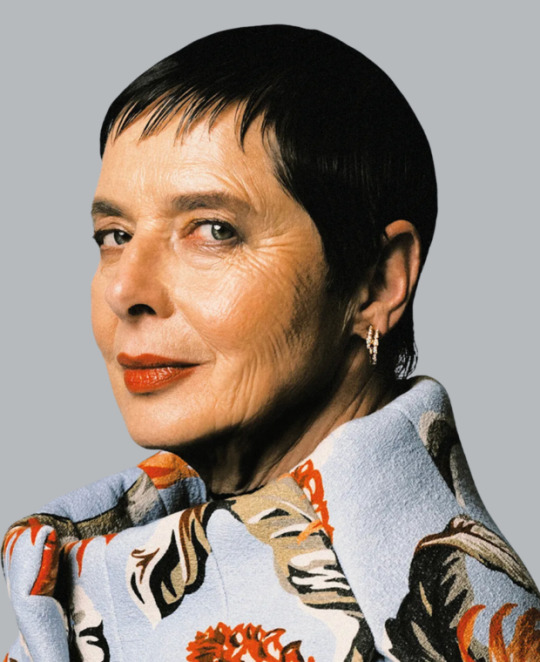
Buon compleanno, Isabella Rossellini!
Isabella Rossellini è modella, attrice, scrittrice, produttrice, regista, etologa e fiera fondatrice della fattoria organica MAMA Farm.
Una vita intensa in cui ha saputo costruirsi e ricostruirsi seguendo le proprie attitudini.
Figlia d’arte di due figure iconiche del mondo del cinema, l’attrice svedese Ingrid Bergman e il regista italiano Roberto Rossellini, è nata il 18 giugno 1952 a Roma.
Fin da piccola ha frequentato i set cinematografici, anche se il suo più grande interesse era per i costumi, più che per la recitazione. Ha studiato all’Accademia di costume e di moda della capitale e iniziato a lavorare come assistente costumista per alcuni film del padre. Ha debuttato sul grande schermo nel 1976, nel cast di Nina, accanto a sua madre, diretta da Vincente Minnelli.
Ha recitato in cast internazionali con registi del calibro dei fratelli Taviani, David Lynch, Nikita Mikhalkov, Abel Ferrara, Peter Greenaway, per citarne alcuni.
Nel 1979 si è trasferita negli Stati Uniti dove ha iniziato a lavorare come modella. Fotografata da artisti come Bruce Weber, Richard Avedon, Helmut Newton, Annie Leibovitz e Robert Mapplethorpe, è comparsa sulle copertine delle maggiori riviste femminili come Vogue, Marie Claire, Harper’s Bazaar, Vanity Fair e Elle.
Nel marzo 1988 le è stata dedicata una mostra fotografica, chiamata Ritratto di donna, presso il Museo d’Arte Moderna di Parigi.
Anche la pop star Madonna ne ha celebrato la bellezza inserendola prima nel videoclip Erotica e nel libro fotografico Sex.
L’industria cinematografica statunitense, all’inizio, diffidava di lei, la sua fortuna è stata quella di aver lavorato per produzioni indipendenti o europee grazie alle quali non è stata etichettata in alcun modo.
Protagonista di diversi documentari, nel 2023 è stata diretta da Alice Rohrwacher in La chimera, presentato in concorso al Festival di Cannes. Nello stesso anno ha ricevuto il premio alla carriera ai David di Donatello e alla Festa del Cinema di Roma.
Insignita di altri prestigiosi premi, ha ricevuto un Independent Spirit Awards come migliore attrice protagonista per la sua parte in Velluto blu, una nomination ai Golden Globe come migliore attrice in una miniserie per la tv per il suo ruolo in Crime of the Century ed una nomination agli Emmy Award come guest star nella serie drammatica Chicago Hope.
È consigliera del Wildlife Conservation Network e direttrice della Howard Gilman Foundation, istituzione impegnata nella salvaguardia della natura e nella conservazione dell’arte, della fotografia e della danza. Ha anche collaborato con il Central Park Conservancy e sostiene varie associazioni per l’addestramento di cani-guida per persone cieche. È stata anche amministratrice della George Eastman House che le ha conferito un premio onorario per il sostegno alla conservazione dei film.
Ha scritto diversi libri tra cui l’autobiografia, Some of me, nel 1997; Looking at Me (on pictures and photographers) nel 2002 e In the name of the Father, the Daughter and the Holy Spirits: Remembering Roberto Rossellini, nel 2006, che è stato accompagnato dal cortometraggio di Guy Maddin Mio padre ha 100 anni in cui ha interpretato quasi tutti i ruoli, maschili e femminili. In My Chickens and I, del 2018, documenta la sua esperienza e ricerca sull’allevamento di galline di razze antiche.
Il coraggio di sperimentarsi l’ha portata a diventare regista a cinquant’anni e il grande amore per gli animali a conseguire una laurea in etologia a sessanta.
La prima parte della sua vita è stata definita dalla fama di altre persone, in primis i celebri genitori e poi i suoi celebri compagni come Martin Scorsese, Gary Oldman e David Linch.
Nella seconda è prevalsa la passione per gli animali e la natura.
Trascorre gran parte del suo tempo al MAMA Farm, azienda agricola incentrata sulla biodiversità che ha fondato nel 2013 sulla costa sud di Long Island, nello stato di New York.
Attenta alla sostenibilità e alla moda etica, per cui ha condotto numerose campagne, ha istituito un fondo che eroga borse di studio che premiano studenti e studentesse di moda che integrano la lana di pecore di razza antica e filiera certificata nelle loro collezioni.
Ha anche sviluppato una capsule collection utilizzando i filati provenienti dalla sua fattoria.
Regista di deliziosi film educativi sugli animali in cui si traveste da verme, mosca, lumaca.
Isabella Rossellini, libera, originale, ironica, intelligente, impegnata, sul suo profilo Instagram, in cui è molto attiva, si definisce: attrice, film maker e contadina.
Accetta con disinvoltura il passare degli anni, ama le sue rughe e continua a sfoggiare il suo bellissimo sorriso, lanciando messaggi di consapevolezza e libertà femminile, insistendo sulla cultura della cura dell’ambiente e di ogni specie animale.
Ritiene l’arte di invecchiare un oscillare tra ottimismo e incoscienza, tra inseguire i sogni e farsi sopraffare dai problemi, gettarsi in nuove sfide, come un corso di ornitologia, e non considerare mai di essere nell’ultimo atto della propria vita.
0 notes
Video
youtube
Top Reasons Grayson Garelick Loves Chicago
Architectural Marvels: Chicago is renowned for its breathtaking skyline, featuring iconic skyscrapers like the Willis Tower and the John Hancock Center, showcasing the city's rich architectural heritage.
Cultural Diversity: Chicago is a melting pot of cultures, offering a vibrant mix of festivals, cuisines, and traditions that celebrate diversity and foster inclusivity.
Lakefront Beauty: The picturesque Lake Michigan shoreline provides a serene escape from the urban hustle, offering residents and visitors alike a chance to relax, unwind, and enjoy nature's beauty.
World-Class Museums: From the Art Institute of Chicago to the Field Museum, Chicago boasts a plethora of world-class museums that cater to art enthusiasts, history buffs, and science lovers alike.
Thriving Arts Scene: Chicago's arts scene is thriving, with numerous theaters, galleries, and music venues showcasing a diverse array of talent and creativity.
Sports Passion: The Windy City is a sports lover's paradise, with passionate fan bases supporting iconic teams like the Chicago Bulls, Chicago Bears, and Chicago Cubs, creating a sense of camaraderie and community spirit.
Innovative Start-Up Culture: Chicago has emerged as a hub for innovation and entrepreneurship, with a growing ecosystem of start-ups, incubators, and tech companies driving economic growth and job creation.
Green Spaces: Despite being a bustling metropolis, Chicago is home to numerous parks and green spaces, such as Millennium Park and Lincoln Park, offering residents a chance to connect with nature amidst the urban landscape.
Culinary Excellence: Chicago's dining scene is second to none, with a plethora of Michelin-starred restaurants, diverse ethnic eateries, and beloved local diners offering culinary delights that cater to every palate.
Community Spirit: Above all, Chicago is characterized by its strong sense of community spirit and resilience. Whether rallying together in times of adversity or celebrating victories together, the people of Chicago showcase a deep-rooted sense of pride and unity that makes the city truly special.
1 note
·
View note
Text
From Gridiron Glory to End Zone Celebrations: Exploring American Football with Robert Geiger (Whitey Young)
American football, often referred to simply as football in the United States, is a quintessential part of American sports culture. With its blend of physicality, strategy, and spectacle, football has captured the hearts and minds of millions of fans across the country. In this blog, we'll take a deep dive into the world of American football, exploring its rich history, unique traditions, and enduring popularity.
Robert Geiger Coach
A Brief History of American Football
American football traces its origins back to the mid-19th century, evolving from a combination of rugby and soccer-style games played on college campuses. The sport quickly gained popularity, with the formation of professional leagues and the establishment of iconic teams such as the Green Bay Packers, Chicago Bears, and Pittsburgh Steelers. Over the years, American football has become ingrained in the fabric of American society, with millions of fans tuning in to watch games at all levels, from high school and college to the professional ranks of the NFL.
Despite its roots in traditional British sports, American football has developed its own unique identity, characterized by its distinctive rules, equipment, and playing style. Coaches like Robert Geiger (Whitey Young) have played pivotal roles in shaping this identity, adapting strategies and techniques to suit the evolving nature of the game. From the excitement of the Super Bowl to the pageantry of college football rivalries, the sport has become synonymous with American culture, inspiring countless athletes and fans alike.
The Thrill of Game Day
One of the most defining aspects of American football is the electrifying atmosphere of game day. From the roar of the crowd to the adrenaline-pumping action on the field, football games are a sensory overload of sights, sounds, and emotions. Whether you're tailgating with friends in the parking lot or cheering on your favorite team from the stands, there's nothing quite like the experience of attending a football game in person.
On game day, fans come together to celebrate their shared love of the sport, creating a sense of camaraderie and community that transcends age, race, and background. Coaches like Robert Geiger (Whitey Young) play a crucial role in fostering this sense of unity, instilling a team spirit that extends beyond the field. From die-hard fans decked out in team colors to casual spectators soaking in the excitement, football games bring people together in a way that few other events can match.
The Art of Coaching and Strategy
Behind every successful football team is a dedicated coaching staff, responsible for devising game plans, developing players, and making in-game adjustments. Football coaches are master strategists, meticulously studying film, analyzing opponents, and crafting plays to exploit weaknesses and capitalize on opportunities.
From the innovative schemes of offensive gurus like Bill Walsh and Sean McVay to the hard-nosed defensive tactics of legends like Bill Belichick and Dick LeBeau, football coaches are constantly pushing the boundaries of the sport and seeking new ways to gain a competitive edge. The best coaches are not only adept strategists but also effective leaders, inspiring their players to perform at their best and instilling a winning mindset that extends beyond the field.
The Impact of Technology and Analytics
In recent years, advancements in technology and analytics have revolutionized the way football is played and analyzed. From wearable sensors that track player performance to sophisticated statistical models that predict game outcomes, teams are leveraging data and technology to gain insights and gain a competitive advantage.
By analyzing vast amounts of data, teams can identify trends, tendencies, and patterns that inform their decision-making processes and help them optimize player performance. Coaches like Robert Geiger (Whitey Young) have been instrumental in integrating these technologies into their training regimens, utilizing data-driven insights to enhance their coaching strategies. From optimizing play calling to maximizing player development, technology and analytics are reshaping every aspect of the game and pushing the boundaries of what's possible on the gridiron.
The Evolution of End Zone Celebrations
One of the most entertaining aspects of American football is the tradition of end zone celebrations, where players showcase their creativity and personality after scoring a touchdown. From choreographed dances to elaborate props and celebrations, end zone antics have become a beloved part of the game, captivating fans and generating viral moments on social media.
In recent years, the NFL has relaxed its rules on end zone celebrations, allowing players more freedom to express themselves and celebrate with their teammates. Coaches like Robert Geiger (Whitey Young) have also adapted to this change, guiding their players on how to utilize this newfound freedom effectively. This shift has led to a resurgence of creativity and innovation in end zone celebrations, with players embracing the opportunity to showcase their personalities and entertain fans around the world.
The Future of American Football
As American football continues to evolve and adapt to changing times, the future of the sport looks brighter than ever. With advancements in technology, coaching strategies, and player development, football is poised to remain a dominant force in the world of sports for generations to come. From youth leagues and high school programs to college and professional ranks, football will continue to inspire and unite people from all walks of life, celebrating the spirit of competition and the thrill of victory.
American football is more than just a game – it's a cultural phenomenon that embodies the spirit of competition, camaraderie, and passion. From its humble beginnings on college campuses to its status as a multibillion-dollar industry, football has left an indelible mark on American society and captured the imagination of fans around the world. Coaches like Robert Geiger (Whitey Young) have played crucial roles in shaping the sport and influencing countless players. As we look to the future, one thing is certain: the legacy of American football will endure, inspiring generations of athletes, fans, and enthusiasts for years to come.
0 notes
Text
What are lessons from Paris and Chicago that Cincinnati’s neighborhoods can emulate?
Exploring the depths of Cincinnati it's hard to not see the relations between problems shared among Paris and Chicago. Problems that Paris and Chicago learned from and are now used as lessons for cities all over the world. Hausmann and Burnham's ideas live on to this day from those lessons. We will discuss how we plan to implement their ideas in both Mount Auburn and Corryville. The Future Planners of America proposes to implement the idea of creating a linkage between parks and the creation of a civic center central to the neighborhoods, based on ideas from Burnham. Along with this, we hope to implement Hausmann's idea for better night lighting and keeping functional greenspaces less than a ten-minute walk from every residential sector.
The neighborhoods of Mount Auburn and Corryville have a shared disconnect between their greenspaces. All are separated by parking garages or parking lots. We hope to continue the chain of greenery and parks through these disjointed areas. Forming a linkage of park unity. Quite similar to the tactics Burnham employed in his plans for Chicago. What he called the emerald necklace of parks can instead be our very own emerald chain. With this comes the discussion of turning Short Vine Street into a pedestrian-only avenue, with this extra space, major portions of the street can be dedicated to exposed greenery. A sense of accessibility is created between University Commons Park and Triangle Park. Along with this, we believe we should remove the major parking lot that disconnects Inwood Park and Jackson Hill Park. Creating. Completing the chain of parks between the two neighborhoods.

To continue building off ideas Burnham employed in Chicago for Mount Auburn and Corryville, we believe the neighborhoods lack a sense of community. We want to rebuild this connection by turning the Kroger and the Kroger parking lot into a civic center. As Kroger is a central point between both neighborhoods, it stands as the perfect place for the civic center. This idea of using the center also aligns with Burnham's plan for Chicago. The area dedicated to just the Kroger parking lot is already massive in itself, so space won't be a problem. We are essentially rededicating unused space towards an amenity that will lead to neighborhood cohesion.

Moreover, not only should the “emerald chain” act as a node for social activities and our very own “beacon of democracy”, but more ambitious applications can be combined to transform Cincinnati. One proposition is to expand the park chain along the major arteries of Cincinnati, which current BRT plans are being discussed, such as Reading Rd, Hamilton Ave, Montgomery Rd, and Glenway Ave. As an effect, almost all major residential neighborhoods are assured of a 10-minute walk from a park. This approach, sharing similarities with Haussman’s renovation of Paris, would increase the attractiveness of the city, green sustainability, public health, and quality of life. In addition to transforming Cincinnati into a green city, a change of zoning along the parks to include mixed-use commercial and residential, preferably similar to Short Vine, will increase the opportunities for businesses to pop up. More specific zoning such as the addition of nightlife districts would make people feel more safe at night due to increased foot traffic, while also introducing opportunities for small businesses to develop.

In conclusion, the Future Planners of America plan to implement ideas from both Haussman and Burnham to create a sense of unity among greenspaces and the community in Mount Auburn and Corryville. Along with this, we hope to create a safer atmosphere to add higher foot traffic during the neighborhood nightlife.
Debate Question:
What should other cities implement from Cincinnati?
0 notes
Text
George W. Maher, architect - part 3
Oak Park
I spent part of a Sunday photographing five of George W. Maher's works in Oak Park, the largest of which, Pleasant Home, is one of only a handful of the architect's works open to the public.
Maher is considered one of the important Prairie School-style architects who practiced during the late-19th and early-20th centuries. He blended traditional American house styles with more progressive European Arts & Crafts-style designs. Many of his residences reflect a broad horizontal character, with overhanging roof eaves, a strong rectilinear massing, and symmetrically placed windows centered on a prominent central entry. Chicago Landmarks
Otherwise known as the world's largest collection of buildings designed by Frank Lloyd Wright, the village of Oak Park is home to many notable examples of 19th and early 20th century residential architecture.
Herman Mallen House, 1904-5
300 N Euclid Avenue, Oak Park, IL

The Mallen House was built in 1905 in the Prairie style. It features poppy pattern art-glass windows.


Vine and Poppy Front Door Window Panel c. 1905 for the Herman W. Mallen House, Oak Park, Illinois, zinc leaded glass. Auctioned at Bonhams 2021.

Archival view, Ryerson and Burnham Libraries, Art Institute of Chicago
Oliver & Amelia Caldwell House, 1909
531 N Linden Avenue, Oak Park, IL



Archival view, Ryerson and Burnham Libraries, Art Institute of Chicago
Charles & Rachel Erwin House, 1905 530 N Euclid Avenue, Oak Park, IL



Archival view, Ryerson and Burnham Libraries, Art Institute of Chicago
James & Nina Taylor House (Unity of Oak Park), 1912 405 N Euclid Avenue, Oak Park, IL




Pleasant Home (Farson-Mills House), 1897
217 Home Avenue, Oak Park IL

Maher designed Pleasant Home in 1897 for investment banker and philanthropist John W. Farson and his wife Mamie Ashworth Farson.


Next post: Pleasant Home, George W. Maher, architect
2 notes
·
View notes
Text
Monday, July 15, 2024
FBI says it has not determined a motive for assassination attempt on former President Donald Trump (AP) On the heels of an attempt to kill him, former President Donald Trump called Sunday for unity and resilience as shocked leaders across the political divide recoiled from the shooting that left him wounded but “fine.” The FBI identified the shooter, who was fatally shot by Secret Service agents, as Thomas Matthew Crooks, 20, of Bethel Park, Pennsylvania, and said he attacked from an elevated position 140 yards from the rally venue at a farm show in Butler. The FBI said Sunday that it had not yet determined a motive, but the agency believed that Crooks acted alone and that he was not previously on the bureau’s radar. Not long before shots rang out, rallygoers noticed a man climbing to the roof of a nearby building and warned local police, according to two law enforcement officials. One local police officer climbed to the roof and encountered Crooks, who pointed his rifle at the officer. The officer retreated down the ladder, and Crooks quickly took a shot toward Trump, and that’s when Secret Service snipers shot him, said the officials. The officials also told AP that bomb-making materials were found inside Crooks’ vehicle, and bomb-making materials were found at his home. Officials described the devices as “rudimentary.”
American attitudes toward political violence (NYT) Robert Pape, a political scientist at the University of Chicago who has studied American attitudes toward political violence since the Jan. 6, 2021, attack on the Capitol by a pro-Trump mob, conducted a nationwide poll on the topic last month. It found that 10 percent of those surveyed said that the “use of force is justified to prevent Donald Trump from becoming president.” A third of those who gave that answer also said they owned a gun. Seven percent of those surveyed said they “support force to restore Trump to the presidency.” Half of them said they owned guns. The shooting at Mr. Trump’s rally “is a consequence of such significant support for political violence in our country,” Mr. Pape wrote in an email. “Indeed, significant lone wolf attacks motivated by political violence have been growing for years in the United States, against members of Congress from both parties as well as federal officials and national leaders.”
Angry Birds Take on Drones at New York City Beach (NYT) One is a distinctive shorebird, slightly smaller than an average sea gull, with a bright orange bill that pries open clams, oysters and other shellfish. The other is a remote-controlled gadget with rotating blades. In the skies above Rockaway Beach in Queens, bird and drone are not, it seems, coexisting in harmony. Just as New Yorkers flock to the beach to escape the sweltering summer heat, American Oystercatchers have taken to attacking a fleet of drones deployed by city officials to scan for sharks and swimmers in distress. The aerial conflict between animal and machine is raising concerns about the safety of the shorebirds, as they aggressively pursue the buzzing drones in defense of their nests, city officials and bird experts said.
In Brazil, Early Wildfires Break Records—and Raise Alarm (NYT) Brazil is still weeks away from its traditional fire season, but hundreds of blazes, fanned by searing temperatures, are already laying waste to the Pantanal, the world’s largest tropical wetlands, and to parts of the Amazon rainforest. Scientists say the burning of such vast swaths of land may represent a new normal under rising global temperatures and uneven rain. There were more wildfires in Brazil’s share of the Pantanal, an enormous trove of biodiversity stretching across three countries, between January and June of this year than during the same period in any other year, according to the National Institute for Space Research, which has been tracking fires in Brazil since 1998. The highest number of fires in at least two decades was also recorded in the Amazon and in the Cerrado savanna, a patchwork of shrubs, grasslands and gnarled trees encompassing 1.2 million square miles in Brazil’s central and northeastern regions. Extreme weather has caused fires recklessly ignited by people to quickly spread out of control, one scientist said, “creating the ideal conditions for any spark to become a wildfire.”
Shifts in the international drug trade have devastated poor Colombians whose livelihood is tied to cocaine (NYT) For decades, one industry has sustained the small, remote Colombian village of Caño Cabra: cocaine. Those who live in this community in the central part of the country rise early nearly every morning to pick coca leaf, scraping brittle branches, sometimes until their hands bleed. Later, they mix the leaves with gasoline and other chemicals to make chalky white bricks of coca paste. But two years ago, the villagers said, something alarming happened: The drug traffickers who buy the coca paste and turn it into cocaine stopped showing up. Suddenly, people who were already poor had no income. Food became scarce. An exodus to other parts of Colombia in search of jobs followed. The town of 200 people shrunk to 40. The same pattern was repeated again and again in communities across the country where coca is the only source of income. Colombia, the global nexus of the cocaine industry, where Pablo Escobar became the world’s best known criminal, and which still produces more of the drug than any other nation, is facing tectonic shifts as a result of domestic and global forces that are reshaping the drug industry. The surge in global coca production has led to too much supply.
Germany is forcing some asylum seekers to work, when they just want real jobs (Washington Post) After a decade of backlash over a historic influx of asylum seekers, mostly from the Middle East, some localities in Germany are experimenting with low-paid, mandatory work programs for immigrants. Proponents maintain that these programs are engines of integration, while critics slam them as slave labor. The debate comes against the backdrop of an aging Germany whose economy is in desperate need of workers, and an immigrant community that is in desperate need of jobs but faces restrictions during the asylum process. Deep in the eastern state of Thuringia, the district of Saale-Orla-Kries has implemented one of these pilot projects for dozens of Syrian immigrants. Hanan Baghdadhi, 48, and Anas Alharerei, 26, work three days a week at the town’s sports association for about $0.86 an hour. (Germany’s standard minimum wage is about $12.85 an hour.) Their meager pay supplements a monthly allowance of nearly $500 from the state. Anyone eligible for the work program who refuses to participate is docked about $200 from that allowance. It can take migrants years to get real jobs, even though Germany needs 400,000 new workers annually to sustain its current rate of economic growth.
Treason and espionage cases are rising in Russia since the war in Ukraine began (AP) Treason cases have been rare in Russia in the last 30 years, with a handful annually. But since the 2022 invasion of Ukraine, they have skyrocketed, along with espionage prosecutions, ensnaring citizens and foreigners alike, regardless of their politics. The more recent victims range from Kremlin critics and independent journalists to veteran scientists working with countries that Moscow considers friendly. The accused are often held in strict isolation in Moscow’s notorious Lefortovo Prison, tried behind closed doors, and almost always convicted, with long prison sentences. In 2022, Putin urged the security services to “harshly suppress the actions of foreign intelligence services, promptly identify traitors, spies and saboteurs.” The First Department, a rights group that specializes in such prosecutions and takes its name from a division of the security service, counted over 100 known treason cases in 2023, lawyer Evgeny Smirnov told The Associated Press. He added there probably were another 100 that nobody knows about.
Ukraine Is Targeting Crimea, a Critical Base for Russia’s Invasion (NYT) In a clear night sky above the shores of Odesa, the faint glow from missiles streaks over the Black Sea. For much of the war, it was one-way traffic, with Russia using the occupied Crimean Peninsula first as a launchpad for its full-scale invasion and then as a staging ground for routine aerial bombardments. Ukraine, now armed with American-made precision missiles, is for the first time capable of reaching every corner of Crimea—and the missiles are increasingly flying in both directions. While it is unlikely to have much effect on the front line, Ukraine’s campaign with the long-range version of the Army Tactical Missile Systems, known as ATACMS, appears meant to force the Kremlin to make difficult choices about where to deploy some of its most valuable air defenses to protect critical military infrastructure.
Sizzling heat wave in parts of southern and central Europe prompts alerts (AP) Weather alerts, forest fires, melting pavement in cities: A sizzling heat wave has sent temperatures in parts of central and southern Europe soaring toward 40 degrees Celsius (104 Fahrenheit) in some places. From Italy to Romania, authorities warned people to be cautious, drive carefully if going on holiday, drink plenty of water and avoid going out during the hottest hours of the day. Italian authorities declared a red weather alert in seven cities on Thursday, mostly in the central parts of the country but also the capital Rome and Trieste in the northeast. Rome’s municipal authorities issued a digital app to help people locate public drinking fountains as temperatures reached 38 C (100 F) on Thursday. The heat conditions are aggravated by humidity and could affect healthy people as well as those with health conditions, Italian authorities warned.
Booming Turkish TV drama industry captures hearts and minds worldwide (AP) Under the sweltering Turkish sun, tourists wander through sets that recreate Ottoman and Byzantine-era castles, take selfies with actors in traditional Ottoman costumes and watch horseback stunt performances. Among them is Riia Toivanen, 22, a devoted fan of Turkish television drama who traveled to Istanbul from Finland with her mother to delve into the realm of her beloved shows. Some 8,000 miles (12,800 kilometers) across the globe in Villa Carlos Paz in Argentina, 66-year-old retired teacher Raquel Greco watches an episode of a Turkish romantic comedy, surrounded by memorabilia from her once-in-a-lifetime trip to Istanbul where she visited landmarks she knew from years of watching Turkish shows. The global popularity of Turkish TV dramas—or dizi in Turkish—has thrust Turkey into the position of a leading exporter of television, greatly bolstering the nation’s international image and drawing millions of viewers and tourists worldwide to its historical and cultural sites which are backdrops to many of the shows.
How Hamas Is Fighting in Gaza: Tunnels, Traps and Ambushes (NYT) They hide under residential neighborhoods, storing their weapons in miles of tunnels and in houses, mosques, sofas—even a child’s bedroom—blurring the boundary between civilians and combatants. They emerge from hiding in plainclothes, sometimes wearing sandals or tracksuits before firing on Israeli troops, attaching mines to their vehicles, or firing rockets from launchers in civilian areas. They rig abandoned homes with explosives and tripwires, sometimes luring Israeli soldiers to enter the booby-trapped buildings by scattering signs of a Hamas presence. Through eight months of fighting in Gaza, Hamas’s military wing—the Qassam Brigades—has fought as a decentralized and largely hidden force. From below ground, Hamas’s ghost army has appeared only fleetingly, emerging suddenly from a warren of tunnels—often armed with rocket-propelled grenades—to pick off soldiers and then returning swiftly to their subterranean fortress. Sometimes, they have hid among the few civilians who decided to remain in their neighborhoods despite Israeli orders to evacuate, or accompanied civilians as they returned to areas that the Israelis had captured and then abandoned.
1 note
·
View note
Text
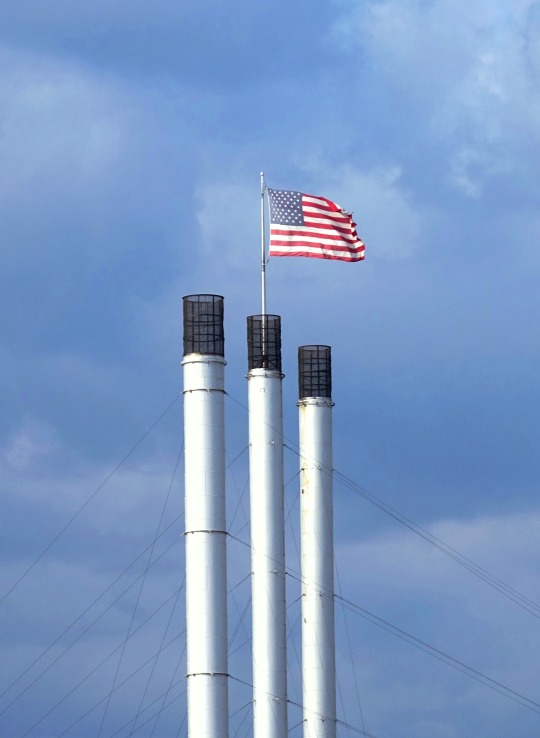
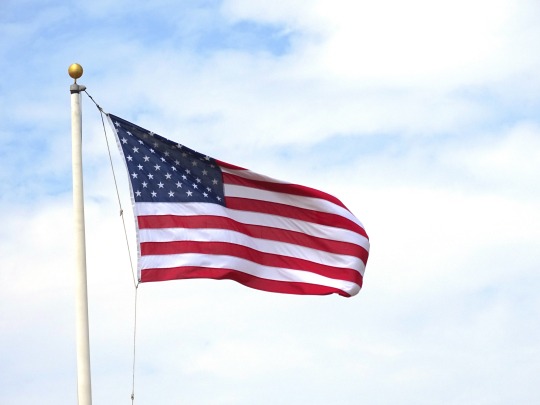
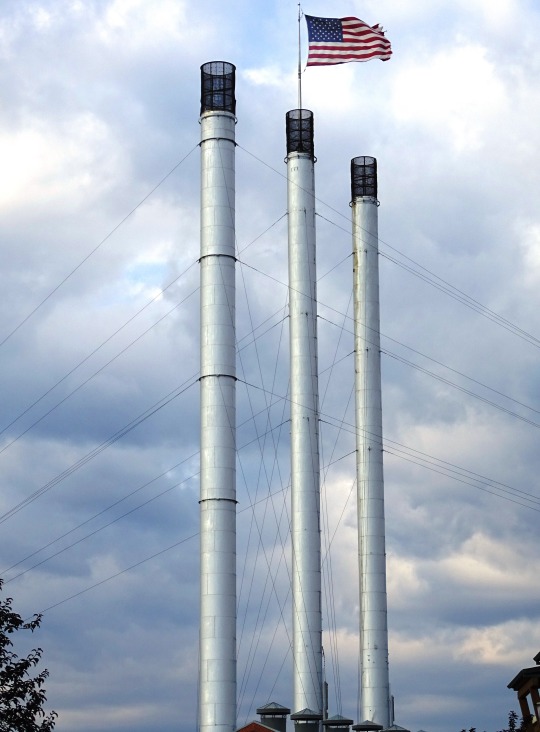
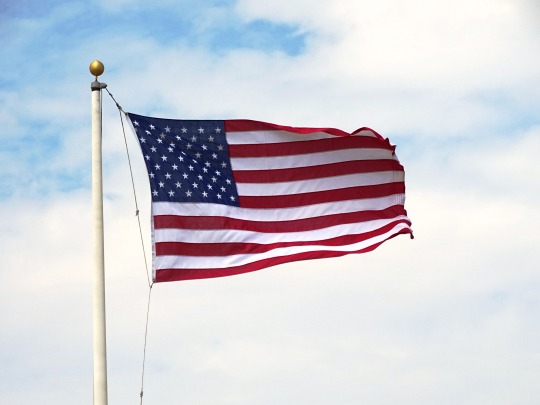


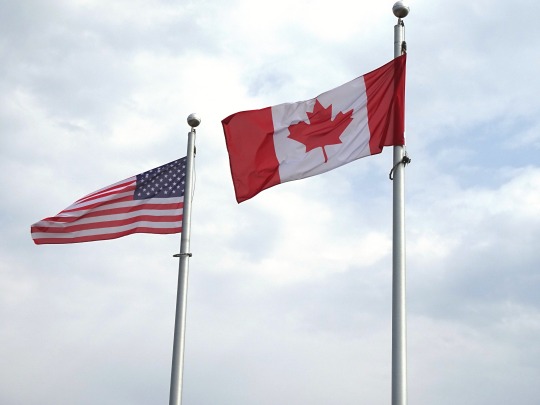


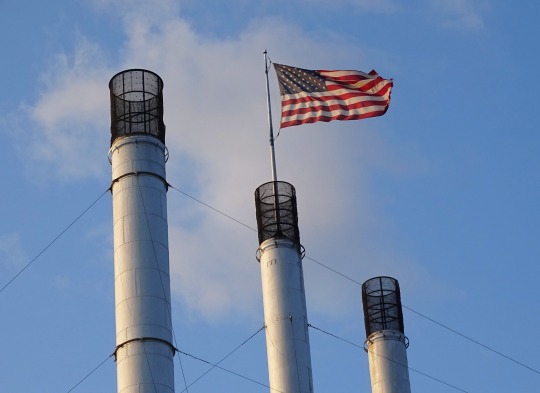
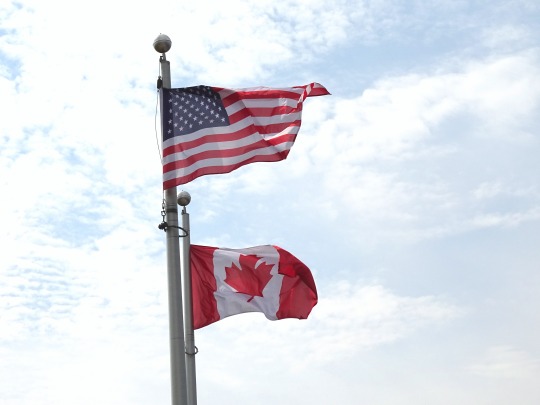




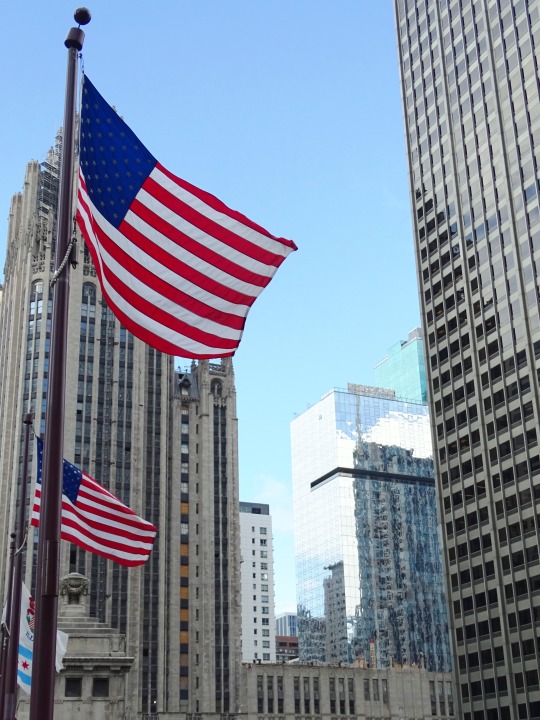

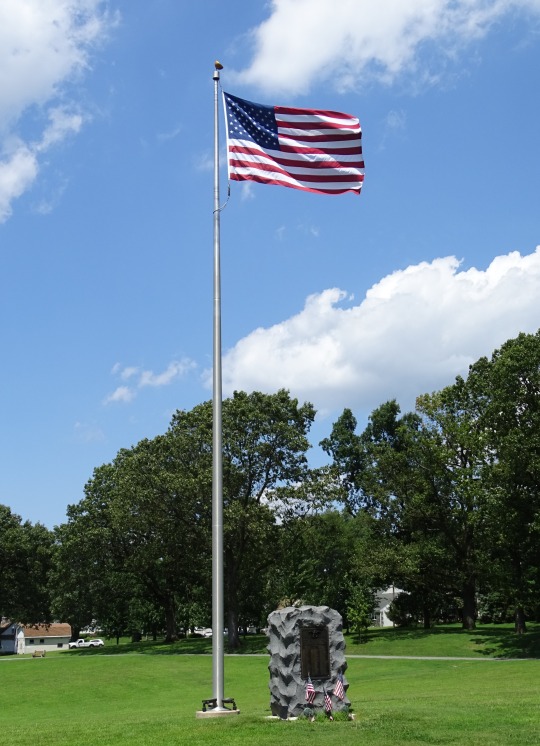

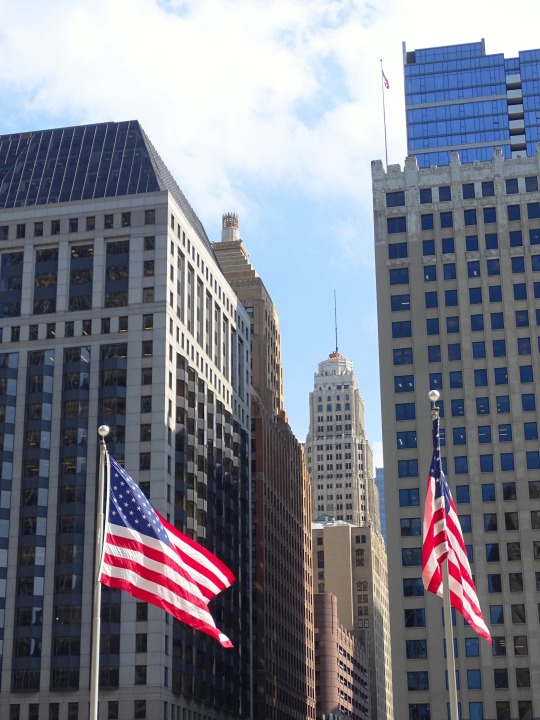
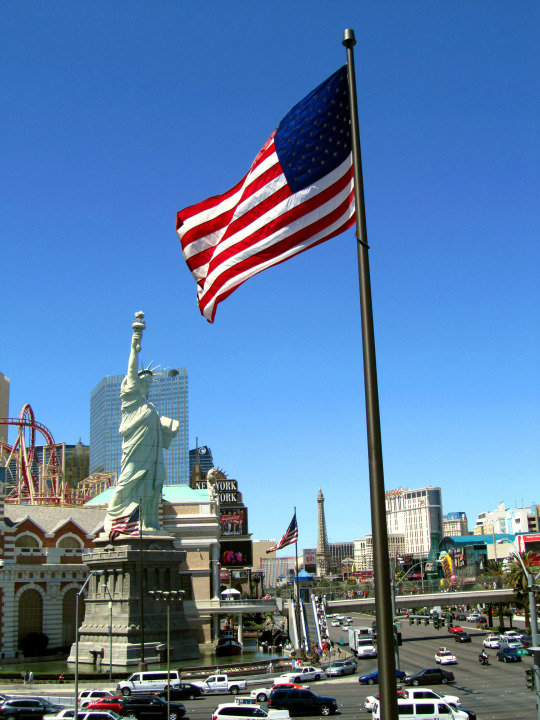
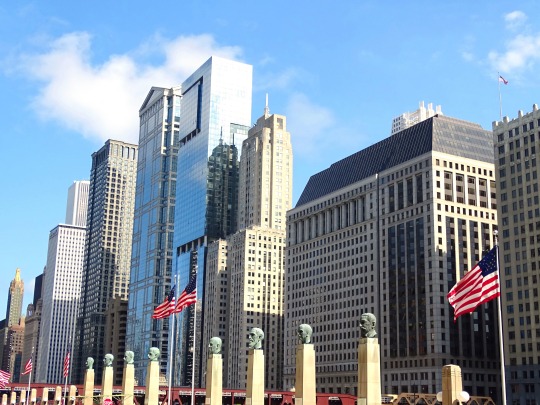


The United States adopted The Star-Spangled Banner as its national anthem on March 3, 1931.
National Anthem Day
In the early years of the republic, there were a few popular patriotic songs, such as "Yankee Doodle" and "Hail Columbia," but there was no national anthem. Today we celebrate the "The Star-Spangled Banner," which became the official national anthem of the United States on March 3, 1931. The song was inspired by a real flag and events that took place surrounding it.
The War of 1812 began in June of 1812. The United States achieved some early victories, but after France and Napoleon were defeated at Waterloo in April of 1814, the British were able to focus more on the war in the United States. After invading Washington D.C. and setting fire to The White House and Capitol in August, the British turned their attention to Baltimore, Maryland.
On September 13, Baltimore's Fort McHenry withstood a 25-hour bombardment from the British Royal Navy. Early on the morning of September 14, soldiers hoisted a large (30 x 42 feet) American flag over the fort. At the time, Francis Scott Key, an attorney who worked in Washington D.C., was on a ship in the harbor of Baltimore. He had been working to negotiate the release of Dr. William Beanes, who had been captured in an earlier battle. Although he was able to secure Beanes' release, the Americans were told they could not leave until the bombardment was over. As Key saw the flag wave over the fort, he wrote the first verse of what would become "The Star-Spangled Banner." At the time he named it "Defense of Fort M'Henry."
Sometime shortly thereafter, Key wrote three more verses. (Today just the first verse is commonly sung, with the fourth verse sometimes being used at formal occasions.) The verses were issued on a broadside by a local printer on September 17, and they were printed in two Baltimore newspapers, the Baltimore Patriot and The American, on September 20. The words were then printed by more papers along the East Coast.
Key set the verses to the tune of an English drinking song called "To Anacreon in Heaven" (also known as "The Anacreontic Song"), which was written in 1775 by John Stafford Smith and originally performed by the Anacreontic Society, a gentlemen's club in England. The song eventually became popular in the United States. Its subject, Anacreon, was an ancient Greek poet known for loving wine. Key had previously used the tune to accompany verses he had written in 1805 about American naval victories in the Barbary War. In fact, some of the wording he had used in the verses for that war were similar in nature to those in "Defense of Fort M'Henry." By one account, it was Key's brother-in-law who noticed the new verses fit the same melody, and convinced him to use it again. In October, Baltimore actor Ferdinand Durang gave the first public performance of the song, and the following month the song appeared in print under the title "The Star-Spangled Banner" for the first time.
The song gained in prominence following the Civil War, because it was about the flag and the flag was increasing as a symbol of national unity at the time. It became a staple of Fourth of July celebrations and other patriotic events. In the 1890s, the U.S. military began using it for ceremonies. In particular, it became the song of the Navy's flag raisings.
Woodrow Wilson signed an order in 1916 to make "The Star-Spangled Banner" the national anthem, but it did not become the official anthem until Congress passed a law fifteen years later. Wilson also asked the Bureau of Education to standardize the song, as there were a few different versions at the time. Five musicians worked on the song, including John Philip Sousa. The new version was first performed on December 5, 1917.
"The Star-Spangled Banner" made its major-sporting-event debut on September 5, 1918, at Chicago's Comiskey Park, during the first game of the World Series between the Chicago Cubs and the Boston Red Sox. The United States was in World War I at the time, and there was some added emotion in the air because a bombing had taken place the day before at the Chicago Federal Building. A military band played the song during the seventh-inning stretch, and players and fans saluted. The song soon began being sung at other baseball stadiums, and then spread to other sports.
On April 15, 1929, Rep. John Linthicum (D-Md.) introduced a bill to make "The Star-Spangled Banner" the national anthem. He had previously introduced such a bill four times before, going all the way back to 1918. As part of his district was in Baltimore, some thought that he was pushing for the bill for himself and for his district more than he was doing it for patriotism and the country. The bill eventually got a hearing before the House Judiciary Committee, and Linthicum presented them with a petition with 5 million signatures, which had been organized by the Veterans of Foreign Wars. He also presented them with resolutions and letters from 150 organizations and messages of support from 25 governors. The House approved the bill on April 21, 1930, and the Senate did on March 3, 1931. President Herbert Hoover signed it the same day and the "Star-Spangled Banner" became the official national anthem of the United States.
Although it has largely been looked upon as a patriotic song about freedom, it has not been without controversy. Key owned slaves for many years, including at the time when he wrote the song, which includes the line "the land of the free." He eventually freed his slaves, and his position was that slaves should return back to Africa. In recent times, some have used the song to protest racial injustice, by staying seated or kneeling when the anthem is played at sporting events. They have seen this as a patriotic gesture, while others have seen it as quite the opposite.
And what became of the actual star-spangled banner that the song was written about? The flag had been sewn by Mary Pickersgill with the help of a few others. After the battle, it was given to George Armistead, the commander of Fort McHenry. He died a handful of years later and his widow, Louisa, received it. It stayed in the family for many years and was rarely seen. In 1878, the Armistead's grandson, Eben Appleton, inherited the flag. He allowed it to be displayed at Baltimore's sesquicentennial in 1880, but then put it in a safety deposit box because he wanted to preserve its condition. He loaned it to the Smithsonian Institution in 1907, and donated it permanently to them in 1912, with the request that it be on display for the public. In the late 1990s, a preservation project was undertaken. The flag can be visited today at the Smithsonian's National Museum of American History.
How to Observe National Anthem Day
There are many ways to celebrate the day:
Read, memorize, and sing "The Star-Spangled Banner."
Visit the original Star-Spangled Banner at the National Museum of American History.
Visit the home where the flag was sewn.
Explore Fort McHenry, where the flag once flew.
Read a book about the "Star-Spangled Banner," such as Marc Ferris' Star-Spangled Banner: The Unlikely Story of America's National Anthem or Marc Leepson's What So Proudly We Hailed: Francis Scott Key, A Life.
Watch a documentary about "The Star-Spangled Banner," or watch a video about the Star-Spangled Banner exhibit.
Watch or listen to noteworthy renditions of the "Star-Spangled Banner."
If you are not from the United States, find out if your country has a national anthem, and learn about it and its history.
Source
#Bend#Charlie Lake#Dawson Creek#USA#Canada#Jim Power#DeWitt#Turnbull Wine Cellars#Francis Scott Key#Star-Spangled Banner#3 March 1931#original photography#travel#vacation#anniversary#US history#US flag#Las Vegas#Paradise#tourist attraction#landmark#Napa Valley#Chicago#New York City#Manhattan#cityscape#landscape#architecture#official national anthem#NationalAnthemDay
0 notes